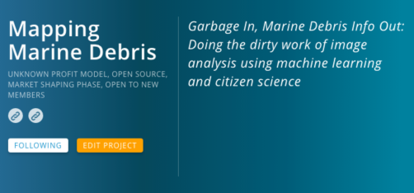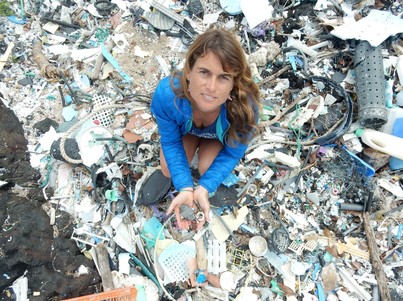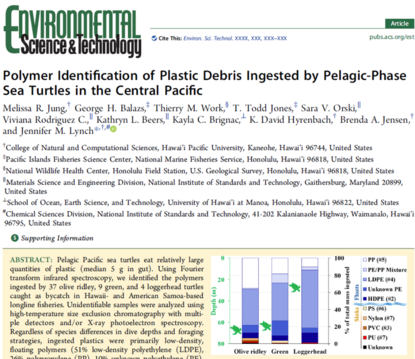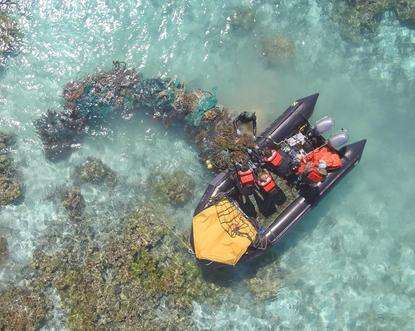| Header Photo: NOAA diver carefully removing derelict nets from the reefs of Pearl and Hermes Atoll.
Photo: NOAA Fisheries/Ari Halperin
 Image: Screen Shot of Mapping Marine Debris project page.
Submitted by: Kirsten Moy
"Mapping Marine Debris" was selected as one of 20 finalists for the Con X Tech Prize. This project will develop machine learning algorithms to automate marine debris detection over vast and remote shorelines. Building upon experiences of our 2015 statewide mapping effort, our goal is to improve the speed and accuracy of debris reporting to coastal managers and cleanup groups.
 Image: Sarah-Jeanne Royer pictured on Kamilo Beach surrounded by plastic marine debris. Credit: Olivier Poirion
Submitted by: Sarah-Jeanne Royer, PhD; sarahjeanneroyer.com, a collaboration through IPRC, UH with Nikolai Maximenko
Researchers from the International Pacific Research Center (IPRC) of the University of Hawai‘i at Mānoa recently published an article in August on the emissions of greenhouse gases by plastics in the environment. Amongst the study’s conclusions, researchers found that low-density polyethylene (LDPE), the most prevalent plastic discarded in the ocean today, releases methane (CH₄), ethylene (C₂H₄), ethane, and propylene at the highest rate.
Learn more here.
 Image: Cover page of Jung et al. (2018b)
Submitted by: Melissa Jung
Hawaii Pacific University and collaborators published research identifying the main polymer types of marine debris ingested by pelagic-phase sea turtles in the Central Pacific. Polyethylene (#2 or #4) and polypropylene (#5) composed the majority of plastics ingested regardless of species’ differences. These polymers are often seen as single use items (e.g. food packaging, bottle caps) that are rarely recycled and heavily used.
Learn more here.
 Image: Aerial shot of marine debris team members hauling in derelict fishing nets. Credit: Steven Gnam
Submitted by: Mark Manuel
The NOAA Fisheries led marine debris survey and removal efforts within the Papahānaumokuākea Marine National Monument concluded on October 29th following a three part 41-day mission that included two ship-based efforts aboard the NOAA Ship Oscar Elton Sette and Charter Vessel Imua as well as a land-based effort on Midway Atoll. The mission removed over 120,000 lbs. of derelict fishing gear and plastics from the shallow coral reefs and shorelines of the six islands and atolls visited. In addition to removal efforts, the team conducted various research objectives including an archipelago wide accumulation study.
Learn more and check out the story map here.
|